On Sunday, the NFL’s Kansas City Chiefs and Philadelphia Eagles will square off in a venue that has hosted three Super Bowls since it was built. Players (and Rihanna for the half-time show) will take the field at State Farm Stadium in Glendale, Arizona, a domed venue that broke ground 20 years ago.
From older, upgraded arenas to brand new billion-dollar venues sporting the latest in amenities, here is a look at the construction details and costs of State Farm Stadium as well as the last seven sites to host America’s biggest game.
2023: State Farm Stadium
Location: Glendale, Arizona
Cost: $455 million
Opened: 2006
Also hosted in: 2015, 2008
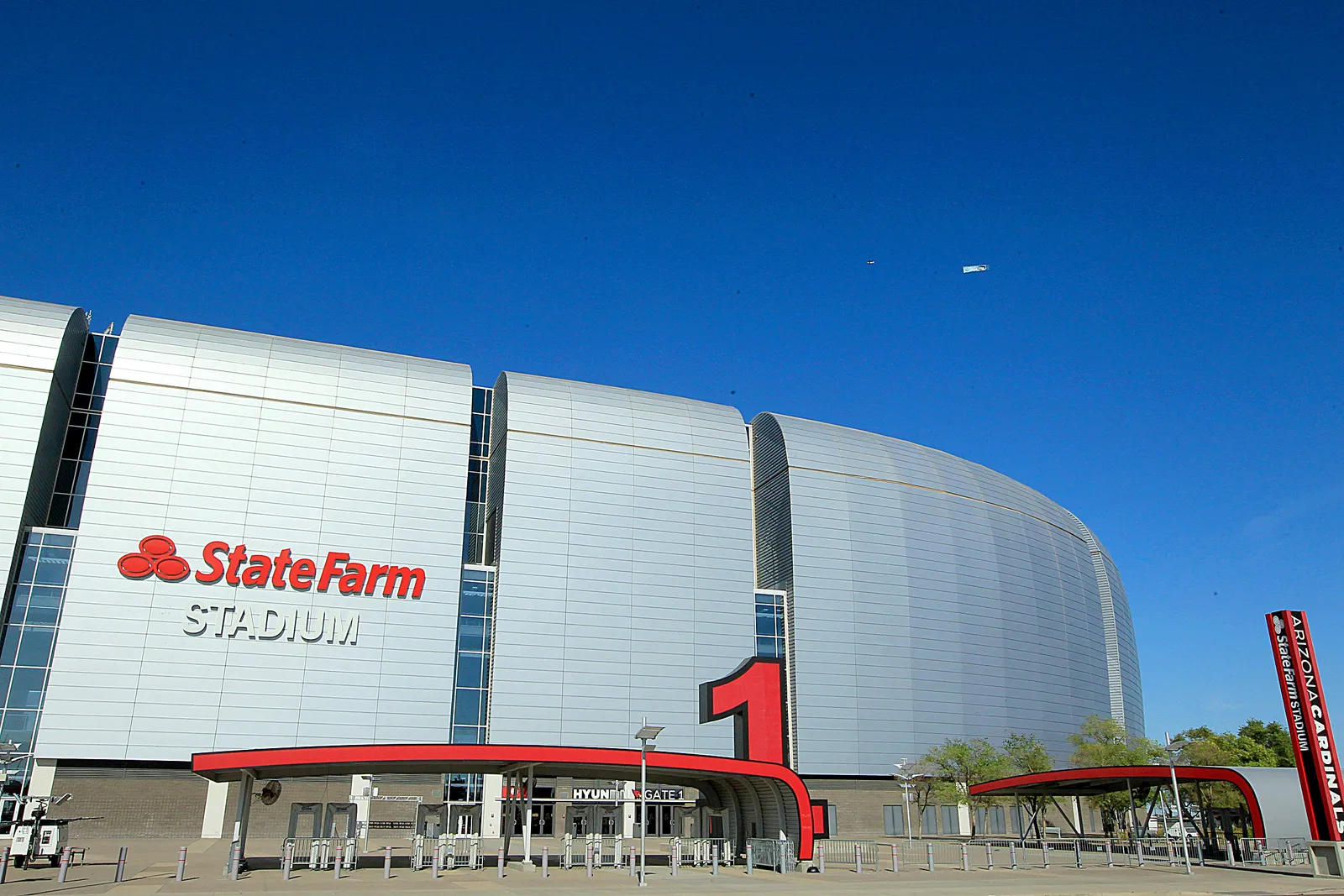
Hunt Construction Group built the Arizona Cardinals’ home — then called Cardinals Stadium — in three years, finishing in January 2006. At the time, the project cost $455 million, according to StadiumDB.com.
The stadium has 63,400 seats, but can expand to 73,000 for “mega-events,” such as the Super Bowl, according to the venue’s official site. Premium seating includes 88 lofts and 7,505 club-level seats.
The retractable natural grass playing field sits on a 40-inch-deep tray that’s 234 feet wide and 403 feet long. Nearly 550 wheels on 13 railroad-like tracks can slide the field tray 740 feet into or out of the stadium, a process which takes about 70 minutes. That has allowed State Farm Stadium to host other events, like concerts or the NCAA’s Final Four tournament.
The stadium’s roof is also retractable, using a 480-horsepower winch system to move two roof panels and make the dome open-air.
2022: SoFi Stadium
Location: Inglewood, California
Cost: $5.5 billion
Opened: 2020
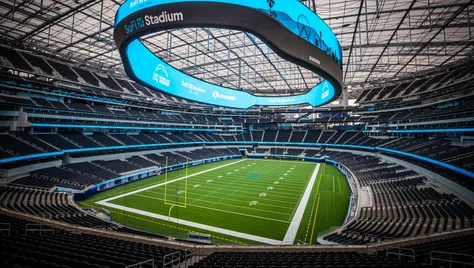
Last year the Los Angeles Rams defended their home turf and won the franchise’s second Super Bowl in the most expensive stadium ever constructed.
SoFi Stadium cost $5.5 billion and took almost four years to build, first serving as home for the Rams and Los Angeles Chargers in September 2020. Constructed as a JV between Turner Construction and AECOM Hunt, the stadium has 70,240 seats, and can expand to 100,240 for major events like the Super Bowl. The stadium also has 260 executive suites and is designed to withstand seismic activity.
The field is sunk below ground to protect it from potential earthquake damage and to avoid interrupting the flight pattern of planes approaching the nearby Los Angeles International Airport. A massive, 2.2 million-pound Samsung video board is suspended from the roof directly over the field.
Rick Bach, senior leader on the build for Turner, told Construction Dive ahead of last year’s game “I don’t think there’s a bad seat in the house.”
2021: Raymond James Stadium
Location: Tampa, Florida
Cost: $168.5 million
Opened: 1998
Also hosted in: 2009, 2001
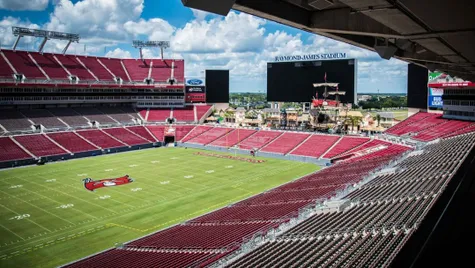
Before Tampa hosted the big game two years ago, the Tampa Sports Authority kicked off an effort to modernize and upgrade the venue's offerings. Changes included a new field drainage system, LED lighting, higher definition video boards and improved seating.
Then, sparked by an increased demand for ticket sales, the stadium underwent a minor renovation to add 3,600 seats, bringing the total up to 70,000, Fox 13 Tampa Bay reported.
2020: Hard Rock Stadium
Location: Miami Gardens, Florida
Cost: $115 million
Opened: 1987
Also hosted in: 2010, 2007, 1999, 1995, 1989
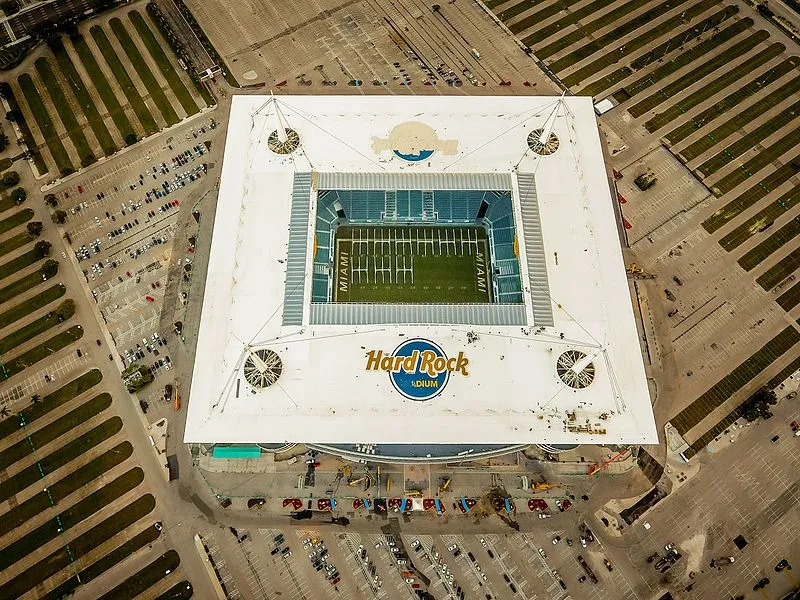
First opened in 1987 as Joe Robbie Stadium, the Miami’ Dolphins’ home turf has gone through several name changes. Constructed for $115 million at the time, according to StadiumDB.com, Hard Rock Stadium has also seen a number of renovations over the course of its history.
Most recently from 2015 to 2016, a $400 million upgrade included removal and replacement of almost all of the seats, upgraded amenities and new video boards. Today the stadium seats 65,000.
2019: Mercedes-Benz Stadium
Location: Atlanta
Cost: $1.5 billion
Opened: 2017
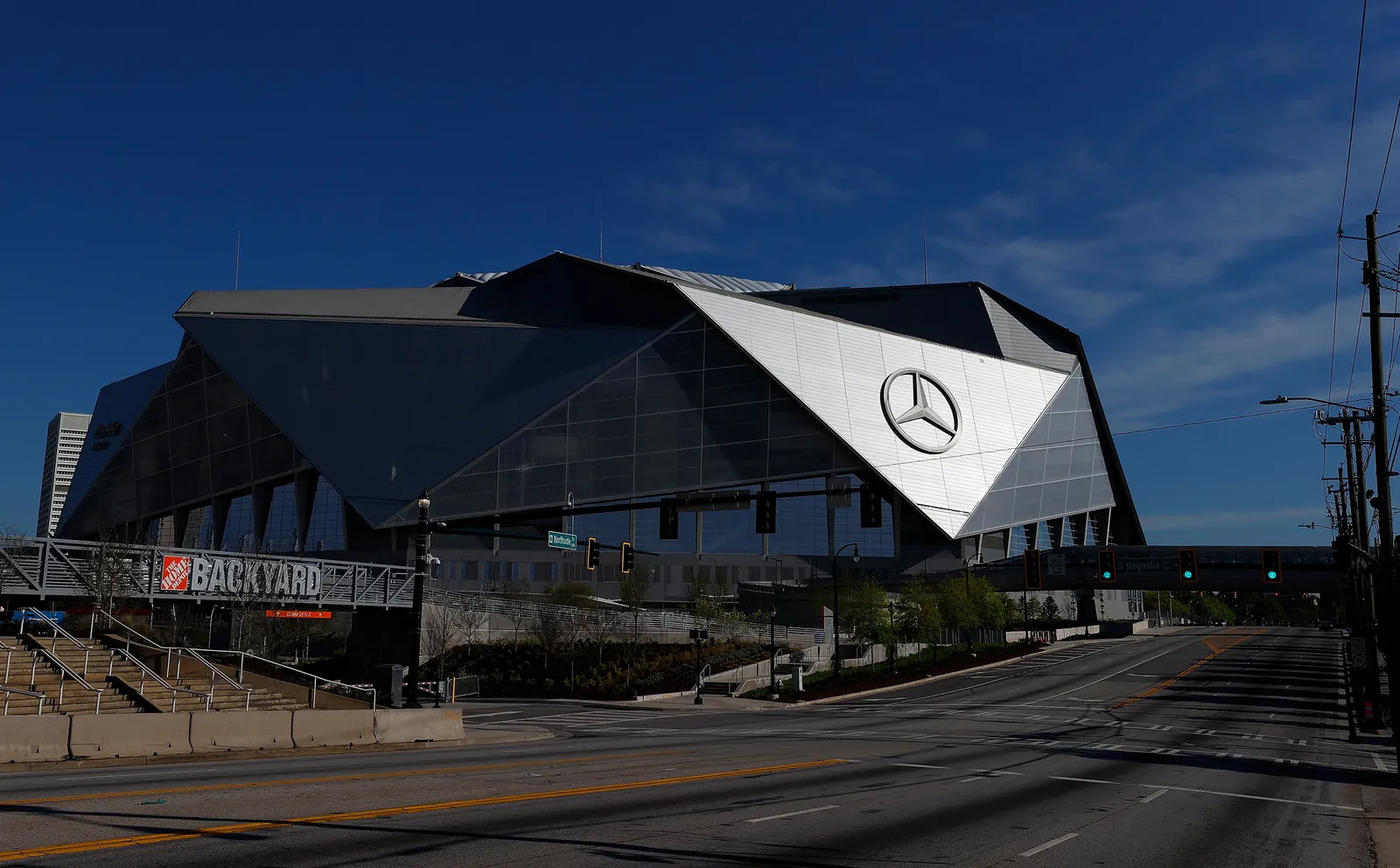
The home of the Atlanta Falcons opened in August of 2017 and pushed up against the regular season start due to delays constructing the dome’s retractable roof. Nevertheless, Mercedes-Benz stadium was the first LEED Platinum-certified stadium and first sports venue to earn 100% of the U.S. Green Building Council’s water credits. Hunt Construction Group, Holder Construction, H.J. Russell & Co. and Moody Construction Co. worked on the project.
The venue has 71,000 seats, though it can expand to 75,000, according to the stadium’s site. That includes 7,600 club seats and 190 suites. The roof is 14.5 acres, and the scoreboard is 63,800 square feet. Construction took 39 months to complete, and used 27,000 tons of structural steel.
2018: U.S. Bank Stadium
Location: Minneapolis
Cost: $1.2 billion
Opened: 2016
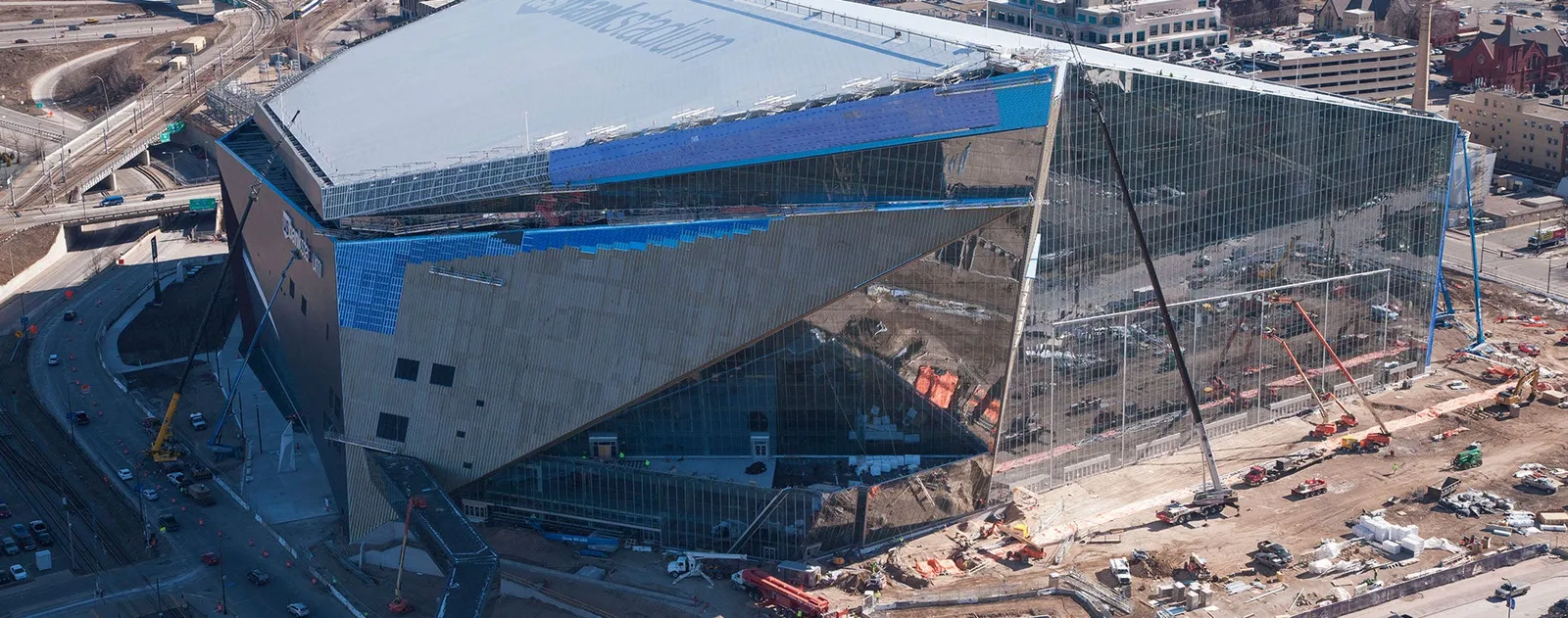
The Minnesota Vikings got $975 million in funding approved for a new stadium in May 2012, and the overall project cost was about $1.2 billion. The project broke ground in 2013 and took two and a half years to complete, according to the venue’s website, with over 8,000 construction workers pouring in an estimated 3.8 million work hours.
The stadium seats about 67,000, but can expand to nearly 73,000. Mortenson Construction served as general contractor.
2017: NRG Stadium
Location: Houston
Cost: $352 million
Opened: 2002
Also hosted in: 2004
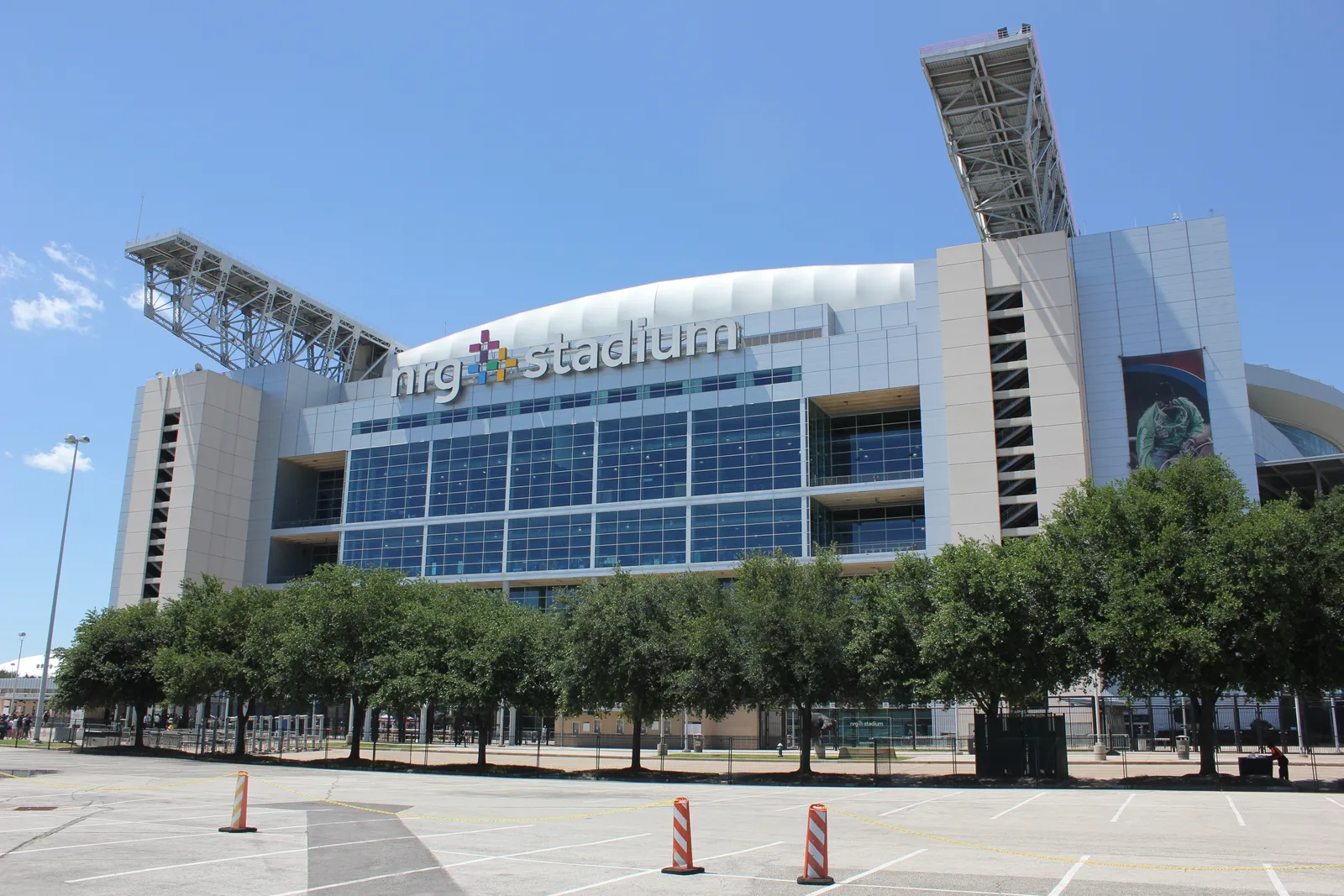
Manhattan Construction Co. and Skanska worked two years to complete what is known today as NRG Stadium, opening for the Houston Texans in 2002, according to StadiumDB.com. The arena has a capacity of 72,200 and 197 suites with a total area of 1.9 million square feet, according to the stadium’s official site.
Fabric-covered steel makes up the venue’s 500-foot-by-385-foot retractable roof, which takes seven minutes to open — the first of its kind in the league, according to NFL.com. Following Hurricane Ike in September 2008, $10 million in renovations were needed to repair what was then called Reliant Stadium, including $4 million for the roof.
2016: Levi’s Stadium
Location: Santa Clara, California
Cost: $1.43 billion
Opened: 2014
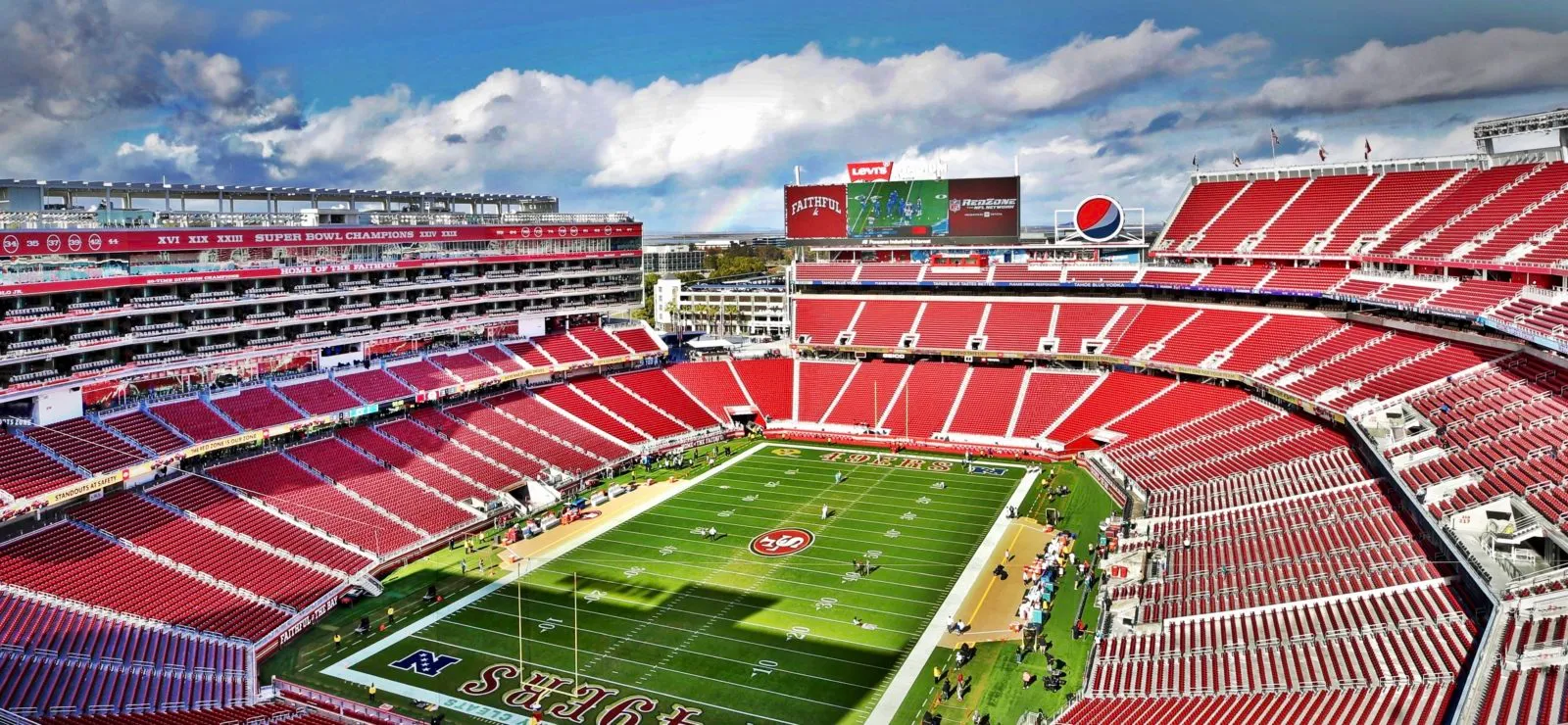
Levi’s Stadium, home of the San Francisco 49ers, broke ground in April 2012 and opened in July 2014, according to the stadium’s official website. The venue seats 68,500 total, and has 9,000 club seats, 174 suites and 11 premium clubs. It was built by a Turner-led joint venture.
Two years after it opened, Levi’s Stadium received LEED-Gold certifications for operations and maintenance of an existing building. Over 400 miles of data cable runs through the stadium, with 70 miles of cable supporting WiFi.
This story has been upated to reflect the contractors that built the Mercedes-Benz Stadium.






















